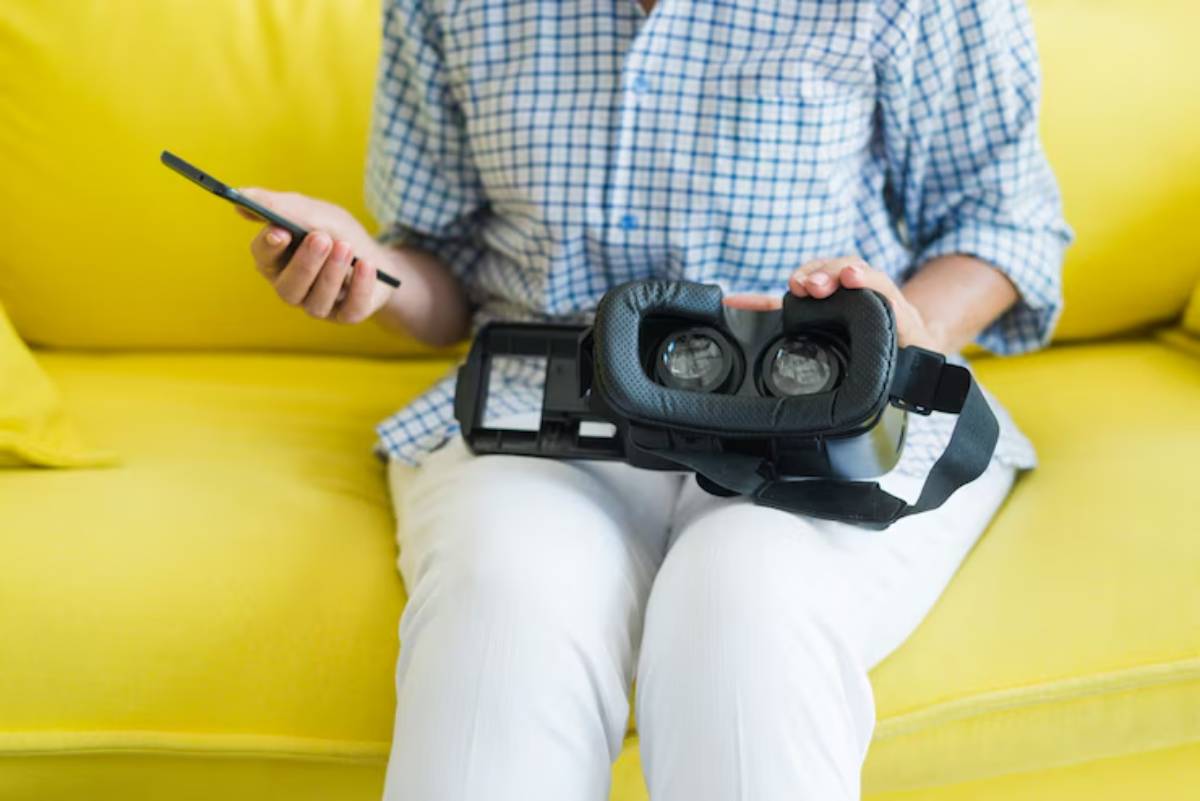
Adjustable IPD: Which Headsets Do It Best?
If you’ve ever worn a VR headset and felt off-balance, dizzy, or struggled with blurred visuals, you might assume it’s the app or the hardware. But more often than not, it’s down to one overlooked detail:
Interpupillary distance (IPD).
IPD refers to the distance between the centres of your pupils. In virtual reality, matching the headset’s lens spacing to your eyes is crucial for sharp vision and visual comfort. That’s where adjustable IPD comes in — a feature that lets you fine-tune the lenses to your personal needs.
Whether you wear glasses, share a headset at home, or simply want the clearest, most immersive experience, knowing which headsets get IPD adjustment right is essential. This guide will explain how IPD works and compare custom-fit VR headsets across top brands.
What Is IPD and Why Should You Adjust It?

In VR, your headset displays images through lenses aligned with your eyes. If the lens spacing doesn’t match your IPD, your brain struggles to process the 3D imagery correctly, causing eye strain, headaches, and disorientation.
Signs of Poor IPD Alignment:
- Blurry visuals or double images
- Eye fatigue after short sessions
- Trouble focusing or maintaining immersion
- Feelings of nausea or dizziness
Most adult IPDs fall between 58–72 mm, though some people fall outside this range. That’s why IPD adjustment isn’t a luxury — it’s a necessity.
Types of IPD Adjustment in VR Headsets

Not all VR headsets offer IPD adjustment, and among those that do, the methods vary.
1. Fixed IPD (No Adjustment)
Some budget or smartphone-based headsets offer no IPD adjustment. They’re built with a fixed distance (usually around 63 mm), which may work well for some, but not all.
Common in: Entry-level devices like Google Cardboard, early Oculus Go
2. Three-Step Adjustment
A simplified version that lets users choose from three pre-set distances (e.g. 58mm, 63mm, 68mm).
Pros: Easier to manufacture, slightly better than fixed Cons: Not suitable for those between settings
3. Continuous Physical Adjustment
The best option. Lenses physically slide left and right for precise alignment.
Pros: Works for nearly everyone, improves comfort Cons: Slightly higher manufacturing cost
4. Software-Based Adjustment (Digital IPD)
Instead of moving the lenses, the software shifts the image, mimicking alignment changes.
Pros: No moving parts, easier on hardware Cons: Less effective for those far outside average IPD range
To ensure optimal comfort across users in a shared household, especially when IPD varies significantly between family members, you might also want to explore our guide on sharing a VR headset at home. It includes setup tips, hygiene best practices, and how to manage hardware adjustments between users.
Headsets That Do IPD Adjustment Right

Let’s break down the top contenders and how they stack up in terms of vr ipd adjustment.
Meta Quest 2
Adjustment Type: Three-step (58mm, 63mm, 68mm)
Meta’s Quest 2 introduced a cost-saving three-position IPD system. While functional, it lacks the finesse of continuous adjustment. If your IPD falls between positions, visual sharpness may suffer.
Verdict: Good for casual users with average IPDs; not ideal for shared use or niche measurements.
Meta Quest 3
Adjustment Type: Continuous physical
Meta corrected its earlier limitations with the Quest 3, offering continuous sliding lenses and a broader range. This makes it a much better choice for multi-user homes and anyone needing a custom-fit VR headset.
Verdict: One of the most accessible and inclusive options available.
Pico 4
Adjustment Type: Software-based (digital IPD)
Pico 4 uses digital IPD shifting through its software interface. While it’s easier for users, it lacks physical lens movement — which can affect clarity for those with lower or higher than average IPD.
Verdict: Great for general use; those outside the 62–72 mm range may notice blur.
HTC Vive XR Elite
Adjustment Type: Continuous physical
HTC has always taken IPD seriously. The XR Elite features a precise physical slider, making it suitable for everything from enterprise to extended play. The device even offers visual feedback while adjusting.
Verdict: Excellent for long sessions, shared setups, or users needing precision.
Valve Index
Adjustment Type: Continuous physical
The Index has a solid build and offers real-time feedback during IPD adjustment, visible through its displays. That means no more guessing or removing the headset mid-adjustment.
Verdict: Premium and precise, perfect for advanced users and those sharing headsets.
PSVR2
Adjustment Type: Software-guided alignment (eye tracking)
Sony’s PSVR2 doesn’t use a traditional slider. Instead, it leverages eye tracking to guide users to optimal positioning. While not physical IPD adjustment, the results are surprisingly accurate for most users.
Verdict: Innovative and user-friendly, though not ideal for those outside the standard IPD range.
IPD Adjustment for Glasses Wearers and Kids
Some users face additional challenges when aligning lenses:
Glasses Wearers
- Look for lens spacing of 65+ mm
- Check for spacer inserts to avoid glasses pressing against lenses
- Prefer headsets with lens protectors or optional prescription inserts
Younger Users
- Children often have smaller IPDs (under 58 mm)
- Devices like Meta Quest 3 and HTC Vive XR Elite are better suited
- Digital-only IPD may not provide sufficient clarity
For family VR setups, prioritise headsets with broader and continuous IPD adjustment. To further optimise comfort for children or glasses wearers, consider one of the best safe VR headsets for kids, which factors in both size and visual comfort.
Which Headset Is Best for IPD Adjustment?
| Headset | IPD Adjustment Type | Range (mm) | Best For |
| Meta Quest 2 | 3-step physical | 58–68 | Casual users with average IPD |
| Meta Quest 3 | Continuous physical | 53–75 | Wide range users, families |
| Pico 4 | Digital software-based | 62–72 | Fitness or casual users |
| HTC Vive XR Elite | Continuous physical | 54–73 | Professionals, multi-user homes |
| Valve Index | Continuous physical | 58–70 | Enthusiasts and long sessions |
| PSVR2 | Software + eye tracking | Auto | Console users, ease-of-use focus |
Conclusion: Don’t Overlook IPD — Your Eyes Will Thank You
Choosing a VR headset isn’t just about resolution or refresh rate. If the lenses don’t align with your eyes, even the best visuals will look wrong, and feel worse. IPD adjustment is essential to enjoying VR without strain, blur, or fatigue.
If you’re buying for a household, sharing a headset, or simply want precision comfort, opt for devices with continuous physical IPD adjustment and wider ranges. Even if it costs a little more upfront, your long-term experience will be far more comfortable and immersive.
Ready to upgrade your VR comfort? Check your IPD and match it with the right headset for your perfect fit.


